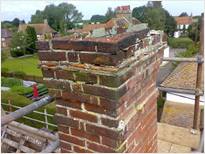
Stove installation
Chimney sweeping and maintenance
 Call now on 01923 711766 / 07790 100526
Call now on 01923 711766 / 07790 100526
 Call now on 01923 711766 / 07790 100526
Call now on 01923 711766 / 07790 100526Armstrong Chimneys - FAQs
Chimney sweep and maintenance in Amersham, Croxley Green, Watford and Bushey
What other areas do you cover?
We cover South Herts, South Bucks, NW London, Middlesex and West Berks. Some of the towns as well as the surrounding villages would include: Rickmansworth, Chorleywood, Croxley Green, Watford, Bushey, Northwood, Moor Park, Harrow, Ruislip, Pinner, Uxbridge, Harefield, Denham, Gerrards Cross, Stoke Poges, Slough, Chalfont Common, Chalfont St Peter, Chalfont St Giles, Little Chalfont, Beaconsfield, Amersham, and Penn.
It is always worth contacting us as these locations are only a general guide.
How long will it take?
We will book appointments in 1.5 hour time slots that will allow some travelling time between locations. A single sweep of a chimney flue will normally take about 40 minutes to an hour but can take longer in some cases such as the removal of a birds nest.
Will you fill my room full of soot?
NO - Before sweeping a chimney, the floor is covered with sheeting which is then covered in a plastic sheet. The aera in front of the fireplace is fully protected. All the tools are the layed onto the sheeting to begin the sweep. During the sweep, the fireplace is sealed using a specially designed sheet with a rodding apature, so all soot and droppage is contained within the fireplace itself. A vacuum is also used, during the sweep in the fireplace to remove the soot, and at the end to clear all that is left.
Sometimes during nest removal, it is difficult to seal off the fireplace because of the difficullty of removal and the volume of debris involved. In these rare cases we carry enough dust sheets and plastic sheeting to cover the whole room.
Do I need to clear or prepare the room before you arrive?
In most cases, all we need is a clear access to the fireplace to carry out the sweep. We need roughly 1.5 to 2m clear space in front of the fireplace for tools and space to do the job.
Its not a bad idea to move delicate objects that may be sited on or around the hearth.
I have a problem getting the fire / stove to draw or work at all.
A live fire or Stove appliance needs regular maintenance to enable it to function correctly. It may be that there is a build up of soot or deposits and the flue is partially blocked or obstructed.
Birds nesting in the flue is more common than people think and if this is the case, the nest will often cause a total blockage and will have to be removed. A suitable bird guard or cowl can then be fitted to prevent a re-occurance.
It may be that an incorrect Cowl type is installed at the terminal (pot), this will then have to be removed and replaced with a suitable cowl for the application.
As part of the sweep, we always give the installation, the flue, stack and terminals a good visual inspection and can always advise you on the steps required to ensure that your appliance or open fire are functioning as they should be.
I often have smoke blown back into the room especially on windy days.
Because of the height of the chimney pot or because of its location in relation to its surrounds, you may be suffering from downdraughts. This is where smoke is pushed back down the flue or back into the room by the build up of wind pressure above.
This can normally be solved by the fitting of a suitable anti-downdraught cowl to the terminal (pot). We normally carry a supply of different cowl types and can advise you on thier installation and the costs involved.
I've had an old gas fire or back boiler removed, can I now use the flu for an open fire?
Normally you will be able to use the flue for an open fire but it will more than likely need some work carried out to ensure that it is in a safe useable condition. At the very least, the flue will need to be swept and tested to ensure that there is not a blockage of any kind. You may find that the flue has a gas flue liner installed, especially in the case of a back boiler. These gas flue liners are not suitable to be used with solid fuel and will have to be removed. You may also find that the pot has been removed and a gas cowl has been fitted in its place. The gas cowl is also not suitable for use with solid fuels and will have to be removed and, in most cases, a terminal pot re- installed.
We are happy to visit you location and advise you on the steps needed to return the chimney flue to a safe workable condition and can provide you with a free quotaiton to undertake the work required.
We hope that we have answered some of you questions with the above information but please feel free to contact us if you need any further advice at all . We are always glad to discuss any queries you may have and hopefully provide answers and friendly advice when we can.

